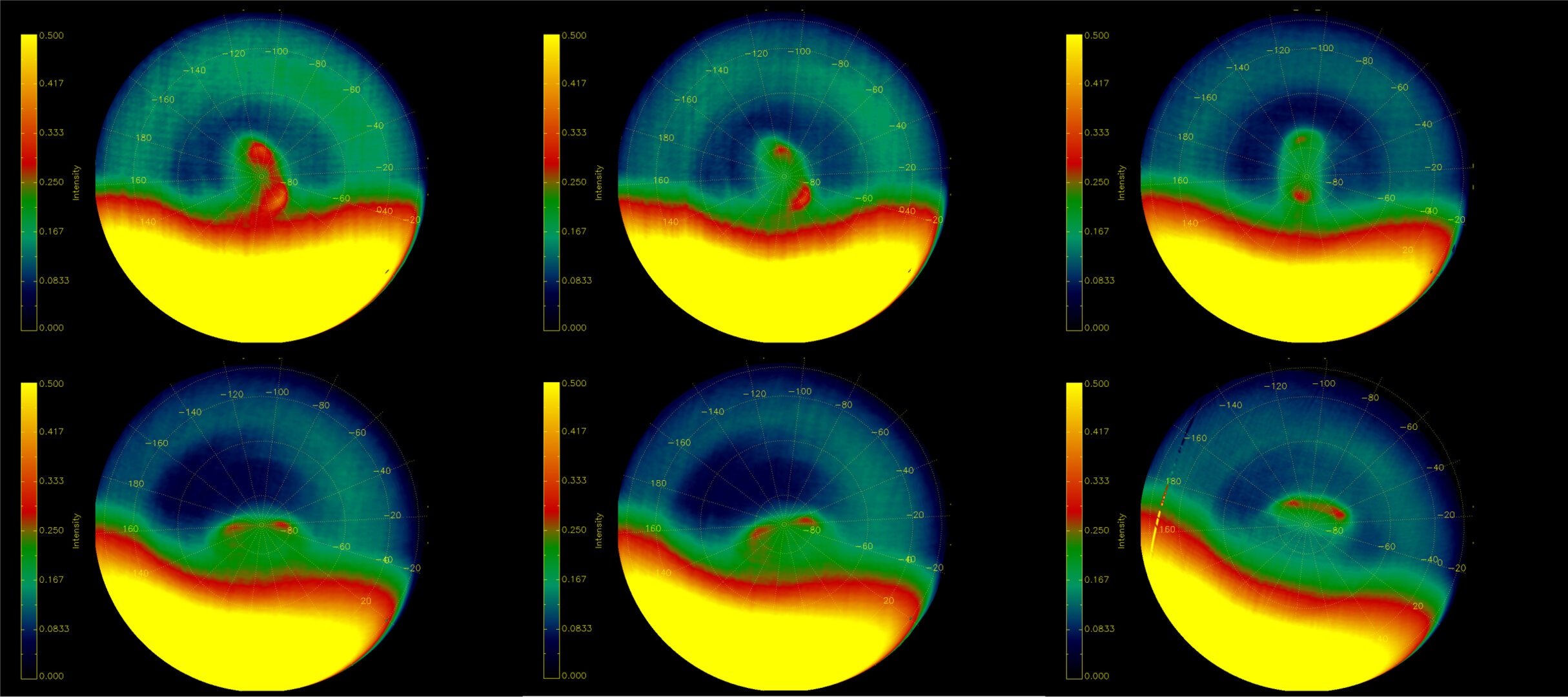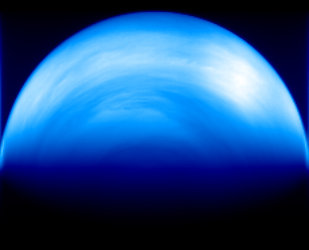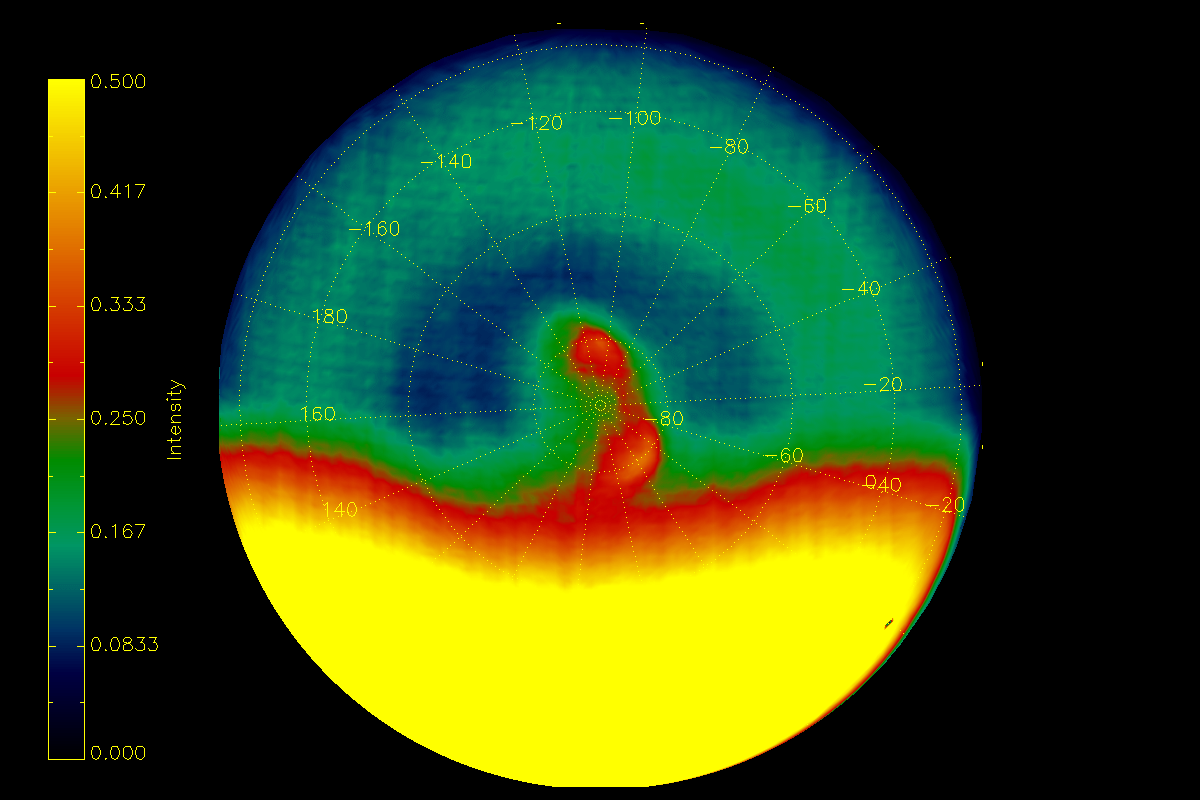

Infrared views of south polar double-vortex
These six different infrared images (in false colour) were taken by the Ultraviolet/Visible/Near-Infrared spectrometer (VIRTIS) on board ESA’s Venus Express spacecraft between 12 and 19 April 2006, during the first orbit, or ‘capture orbit’, around the planet.
The images (taken at 5 microns) were obtained at six different time slots and different distances from Venus (top left: 12 April, from 210 000 kilometres; top centre: 13 April, from 280 000 kilometres; top right: 14 April, from 315 000 kilometres; bottom left:16 April, from 315 000 kilometres; bottom centre: 17 April, from 270 000 kilometres; bottom right: 19 April, from 190 000 kilometres), while the spacecraft moved along a long ellipse around the planet.
The separate images can be downloaded here [ COB_01_geo.TIF, COB_02_geo.TIF, COB_03_geo.TIF, COB_04_geo.TIF, COB_05_geo.TIF, COB_06_geo.TIF].
The planet’s globe, imaged at different angles, was mapped onto an electronic mock-up of Venus, so to have the south pole always plotted at the centre of each single image.
Around the south pole it is possible to see a peculiar double-eye vortex structure, never clearly seen by any other mission to Venus before. The sequence shows the rotation and variation of the double vortex over time. It is also possible to see the rotation of the ‘terminator’, the line separating the day side – visible in yellow - from the night side.
The images also show the presence of a collar of cold air around the vortex structure (dark blue), possibly due to the recycling of cold air downwards.





